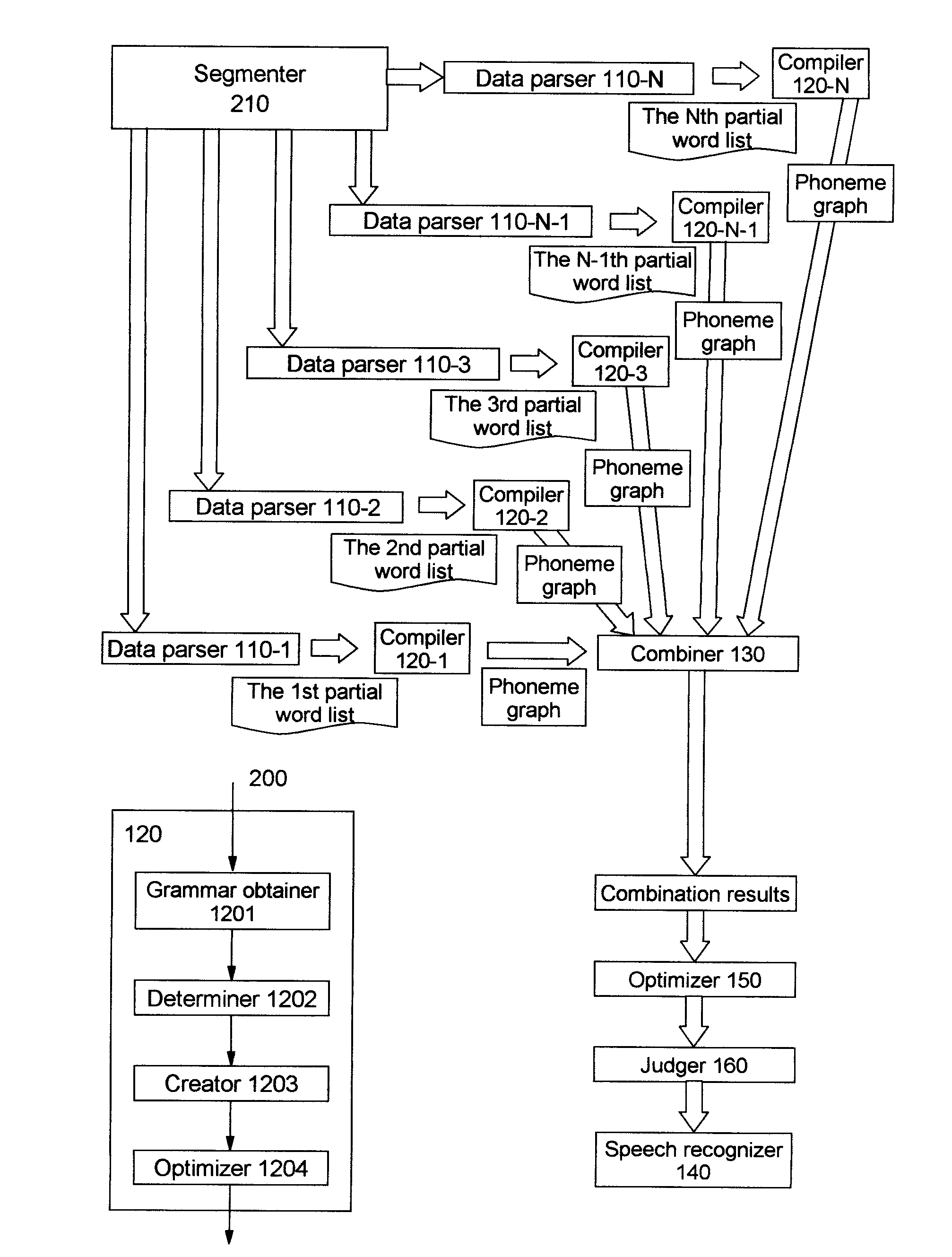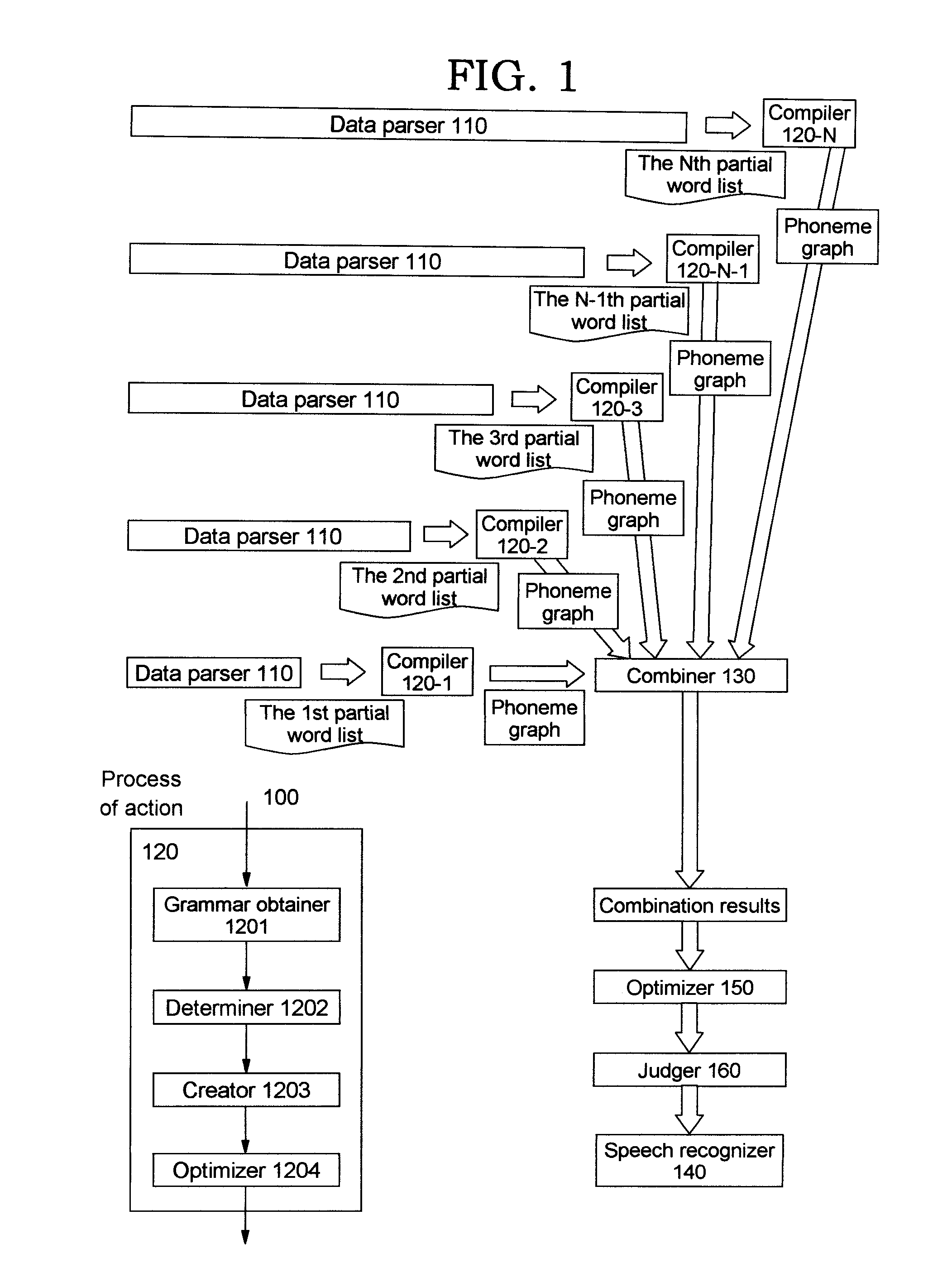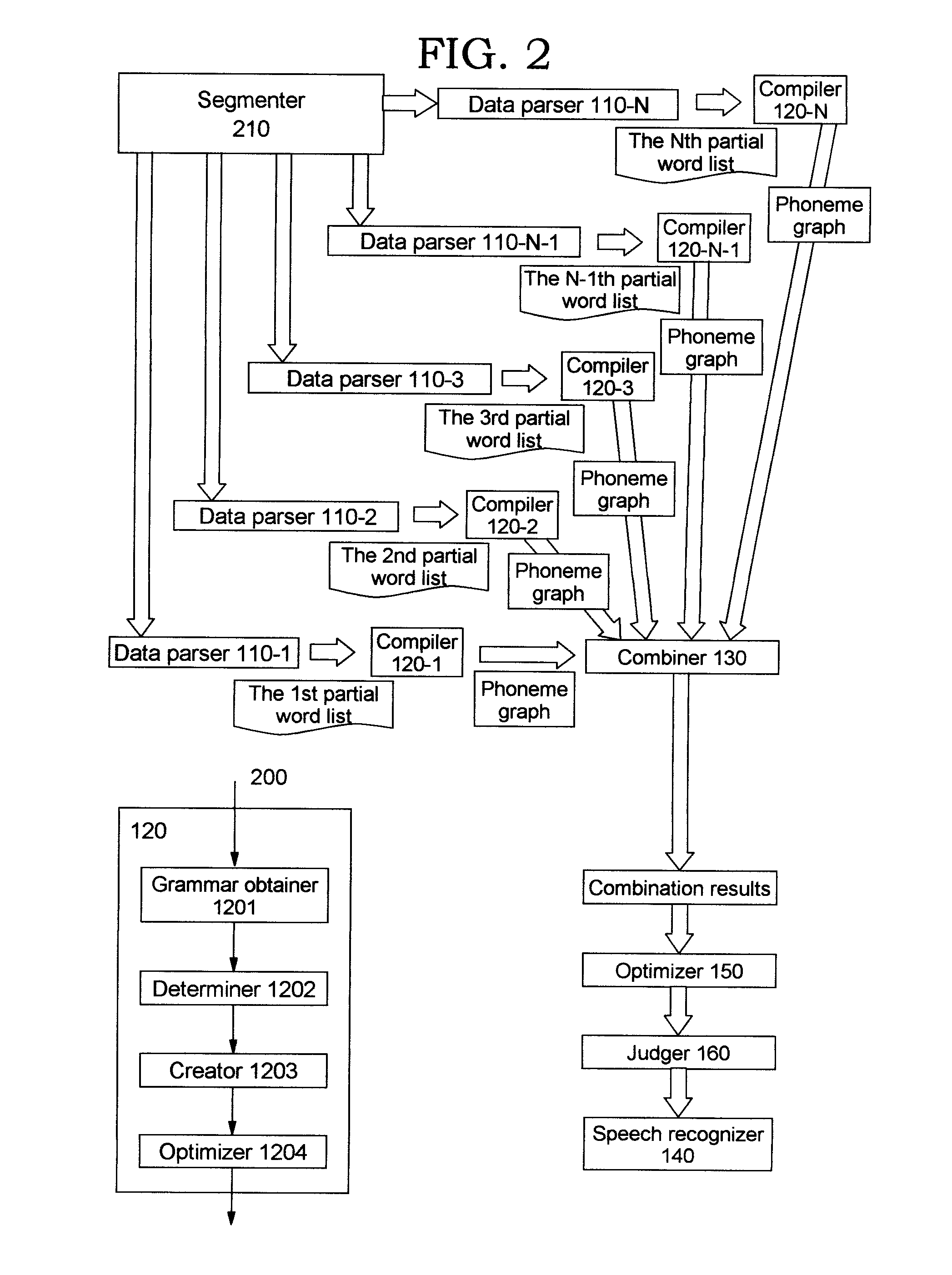Converting text into speech for speech recognition
a text and speech recognition technology, applied in the field of information technology, can solve the problems that lvcsr (large vocabulary continuous speech recognition) and nlu (natural language processing) cannot meet the requirements of human-machine speech communication accuracy and performance in real life, and the problem of computational complexity and improving recognition efficiency is to be confronted
- Summary
- Abstract
- Description
- Claims
- Application Information
AI Technical Summary
Benefits of technology
Problems solved by technology
Method used
Image
Examples
first embodiment
[0017]FIG. 1 illustrates a system of converting a text into a speech according to the present invention.
[0018]As shown in FIG. 1, the system 100 comprises a data parser 110 for parsing a data source in the text form to obtain partial word lists of the data source; a plurality of compilers 120-1, 120-2, 120-3, . . . 120-N-1, 120-N for compiling the partial word lists to obtain phoneme graphs corresponding, respectively, to the partial word lists; a combiner 130 for combining the obtained phoneme graphs; and a speech recognizer 140 for conducting speech recognition according to the combination results.
[0019]It should be understood by those skilled in the art that the term “word”, as used herein, represents a common grammatical element such as a character, a word, and / or a phrase. A partial word list refers to part of the word list obtained by parsing the whole data source.
[0020]In the first embodiment of the present invention, the data parser 110 parses the data source in series, afte...
second embodiment
[0059]FIG. 2 illustrates a system of converting a text into a speech according to the present invention.
[0060]The system 200 differs from the system 100 shown in FIG. 1 in that the system 200 comprises a segmenter 210 for segmenting a data source to obtain segments of the data source, and a plurality of data parsers 110-1, 110-2, 110-3, . . . 110-N-1, 110-N which parse the data source segments in parallel to obtain partial word lists of the data source segments.
third embodiment
[0061]FIG. 3 illustrates a flowchart of a method of converting a text into a speech according to the present invention.
[0062]As shown in FIG. 3, the method 300 comprises step S310 for parsing a data source in the text form to obtain partial word lists of the data source; step S320 for compiling the partial word lists to obtain phoneme graphs corresponding, respectively, to the partial word lists; step S330 for combining the obtained phoneme graphs; and S340 for conducting speech recognition according to the combination results.
[0063]In the third embodiment, the data source is parsed in series, and after a partial word list is obtained, the partial word list is compiled to obtain a phoneme graph. The remaining data source is then parsed continually to obtain a next partial word list.
[0064]In the third embodiment, the method further comprises step S360 for judging whether combination results have sufficient information to conduct speech recognition before combination of the phoneme gr...
PUM
 Login to View More
Login to View More Abstract
Description
Claims
Application Information
 Login to View More
Login to View More - R&D
- Intellectual Property
- Life Sciences
- Materials
- Tech Scout
- Unparalleled Data Quality
- Higher Quality Content
- 60% Fewer Hallucinations
Browse by: Latest US Patents, China's latest patents, Technical Efficacy Thesaurus, Application Domain, Technology Topic, Popular Technical Reports.
© 2025 PatSnap. All rights reserved.Legal|Privacy policy|Modern Slavery Act Transparency Statement|Sitemap|About US| Contact US: help@patsnap.com



